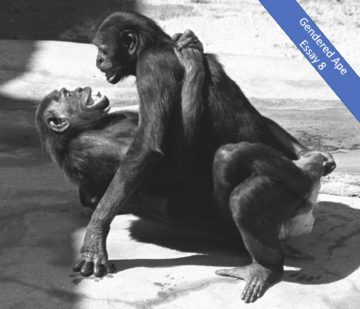Editor’s Note: Frans de Waal’s new book, Different: Gender Through the Eyes of a Primatologist, has generated some controversy and misunderstanding. He will address these issues in a series of short essays which will be published at 3QD and can all be seen in one place here. More comments on these essays can also be seen at Frans de Waal’s Facebook page.
by Frans de Waal

Sigmund Freud — a man with little anatomical expertise and no vagina – invented the vaginal orgasm. Considering it superior to the clitoral orgasm, he dismissed the latter as something for children. Women who enjoyed it were stuck at an infantile stage, ripe for psychiatric treatment.
It was Freud’s way of saying that female orgasm without male penetration doesn’t count.
Anatomists, however, have been unable to find the nerve endings in the muscular vaginal wall required for pleasure, while the clitoris has an abundance. Even though the clitoris is a marvel of engineering, there was a time when evolutionary biologists dismissed it as a by-product that wasn’t any more functional than the male nipple. Stephen Jay Gould declared the clitoris a “glorious accident.”
The medical community, too, still acts as if this little organ hardly matters even though the clitoris has a higher density of sensory points and nerve endings than the penis.
The clitoris likely evolved to turn sex into a pleasant, addictive affair. The assumption is that of an enterprising female sexuality, one that seeks until it finds what it likes. Women are anatomically equipped for pleasure as are mice, elephants, and all other mammals. It can’t be an accident that species with the most nonreproductive sexual activity, such as bonobos and dolphins, own the largest clitorises.
The Victorian view that an active male sexuality meets a passive female is still very much with us. That males try to fertilize as many partners as they can, whereas females are choosy, is known as Bateman’s Principle. This principle, repeated over and over in biology textbooks, is thought to also apply to human behavior, such as when sociobiologist, E. O. Wilson (1978) stated: “It pays for males to be aggressive, hasty, fickle and undiscriminating. In theory, it is more profitable for females to be coy, to hold back until they can identify males with the best genes … Human beings obey this biological principle faithfully.”
Bateman’s principle is problematic, though, and unevenly supported. It fails to explain, for example, the amount of sex that female primates actively seek. Chimpanzee females copulate more often and with more partners than you’d expect if conception were their sole objective. It has been estimated that over her lifetime a wild female chimpanzee engages in 6,000 matings with at least a dozen of different males. Yet, she’ll produce altogether only five or six surviving offspring. From a fertilization standpoint, she has an insane amount of sex.
Such behavior is typically discussed as female “promiscuity,” but this word has too much of a moral ring to it, and a negative one at that. I prefer to speak of sexual “adventurism” or “proactivity.”
Bonobo females are even more sexually proactive and assertive than their chimpanzee sisters. Since they are the dominant gender, they may push and shove a male until he gives in and mates with them. Female bonobos also engage in frequent sexual encounters with each other.
There exist evolutionary hypotheses about the sexual proactivity of female primates – such as the use of sex to confuse paternity and promote female bonding – but my main point here is that it’s time to abandon the idea of a natural female passivity, as also argued at length by Lucy Cooke in her recent book “Bitch: On the Female of the Species” (2022).
Anyone who witnesses female bonobos in the midst of intense GG-rubbing will agree that it looks extremely enjoyable. Both females bare their teeth in a grin, utter piercing squeals, and frantically rub their clitorises together while staring into each other’s faces.
But the biggest giveaway about pleasure is that bonobo females regularly masturbate. Laying on their back, they rhythmically move a finger or toe through their vulva while staring into the distance. This leisurely activity, which lasts a lot longer than the typical copulation, would make no sense unless they’re getting something out of it. And it’s unlikely to be a vaginal orgasm.
FURTHER READING
On the medical community’s ignorance of the clitoris: www.nytimes.com/2022/10/17/health/clitoris-sex-doctors-surgery.html
For further details and references to the literature, read “Different: Gender Through the Eyes of a Primatologist” (Norton, 2022). A video about the book can be seen here: https://fb.watch/ffbauZBzNb/
